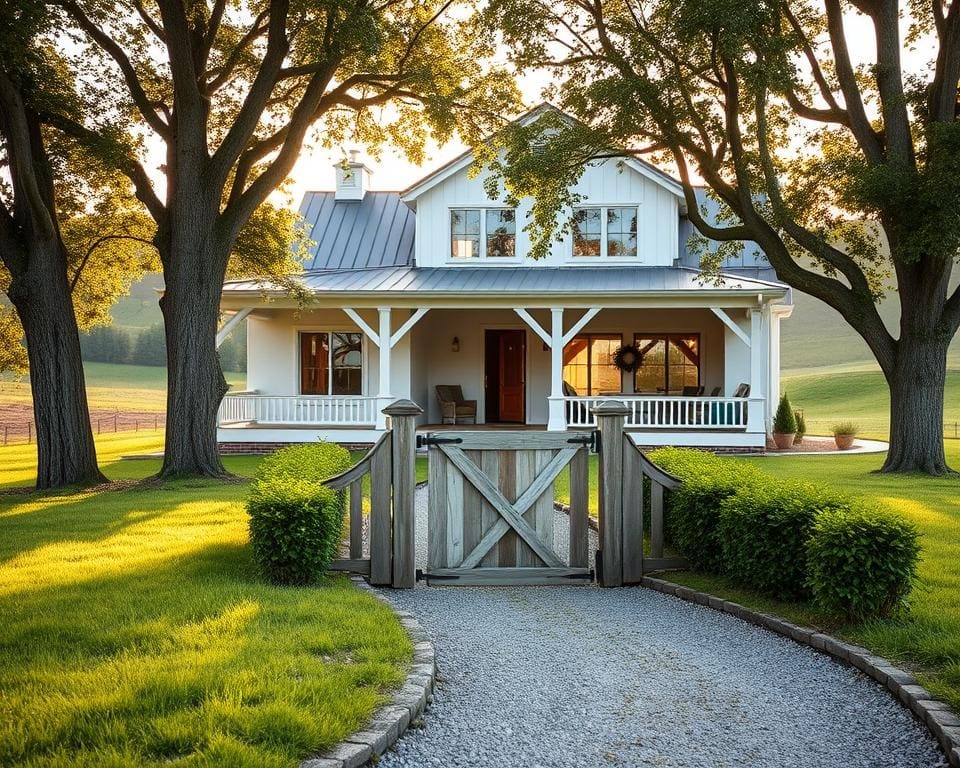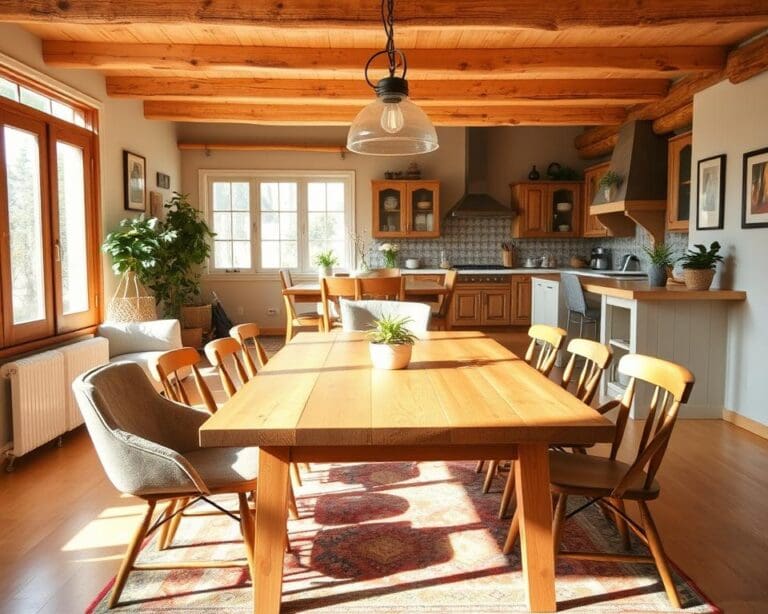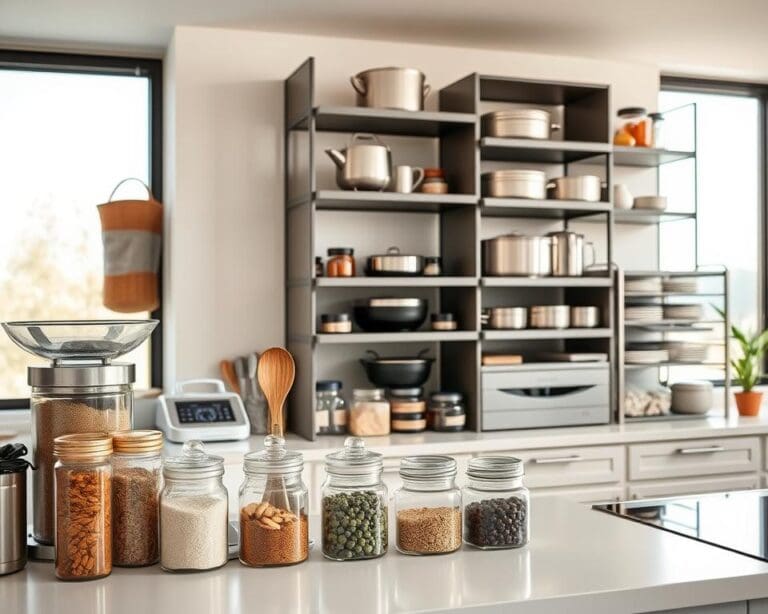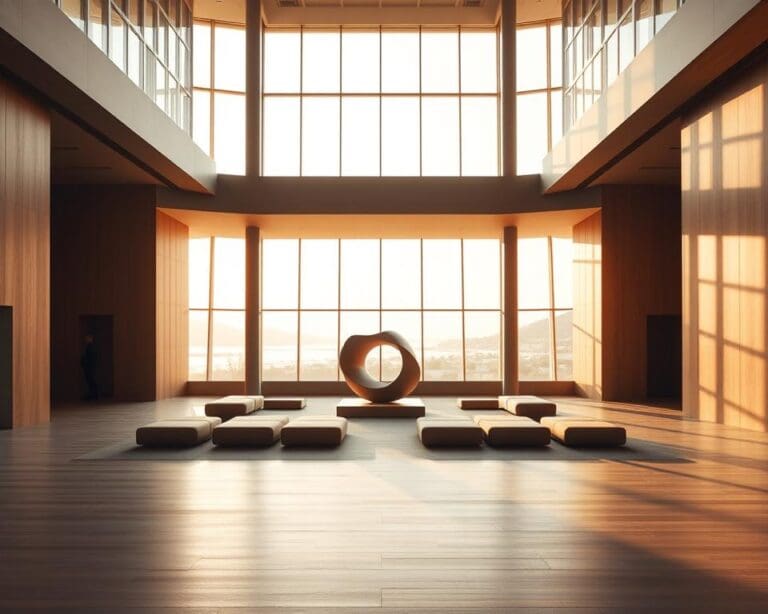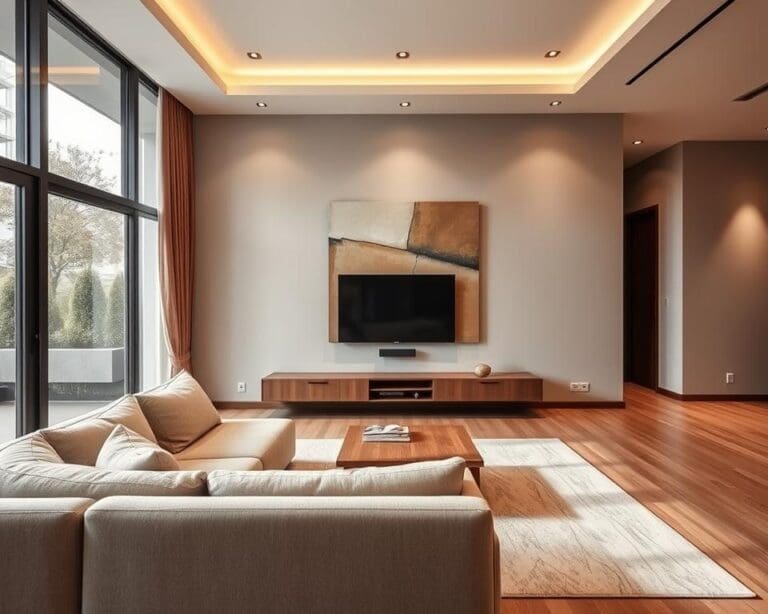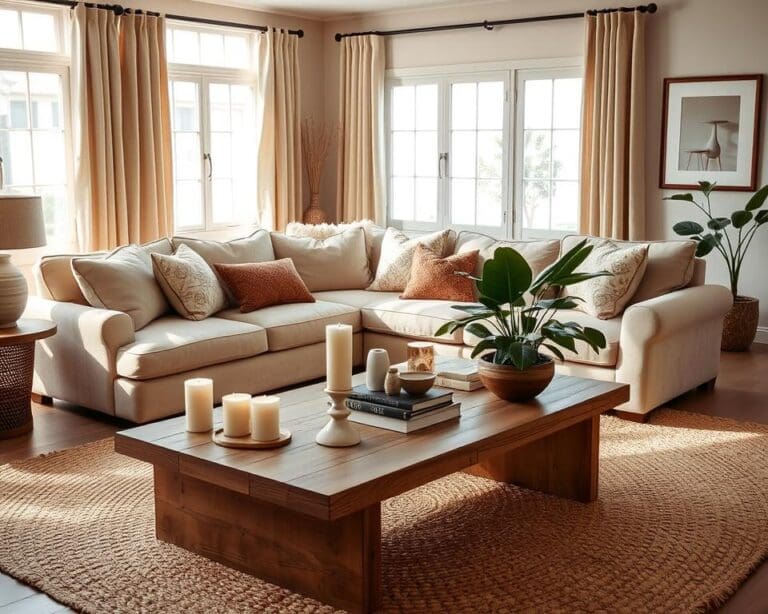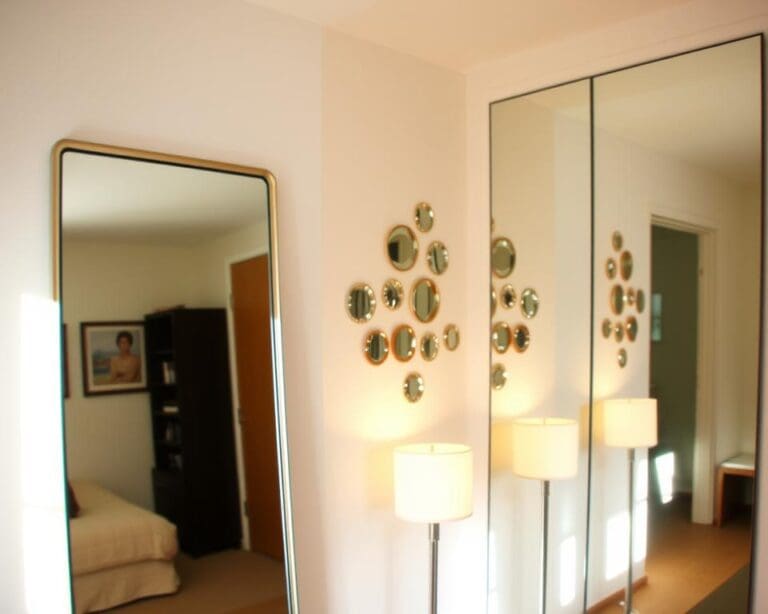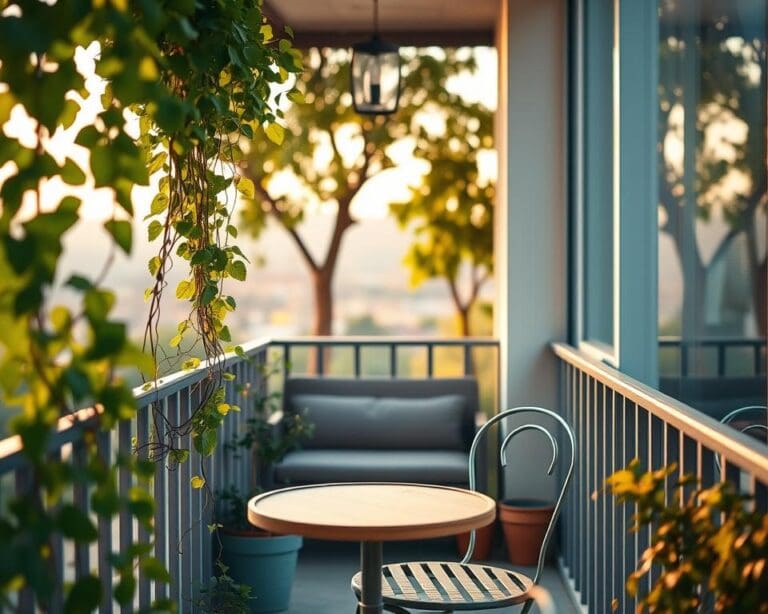The modern farmhouse style in Britain is a beautiful fusion of rustic elegance and contemporary design. Rooted in the simplicity of traditional British farmhouse design, this aesthetic embraces a fresh, innovative approach, where open spaces and natural light play pivotal roles. In today’s eco-conscious society, the integration of eco-friendly innovation enhances this style, allowing homeowners to create an inviting atmosphere that reflects both heritage and modern sensibilities.
With influences drawn from country cottages and urban lofts, the contemporary farmhouse embraces a mix of rustic textures and sleek lines, making it a sought-after choice for those looking to harmonise comfort with style. In capturing the essence of British farmhouse design, this movement not only celebrates aesthetic appeal but also prioritises sustainability and practicality.
The Essence of Modern Farmhouse Style
The essence of modern farmhouse style embodies a harmonious blend of comfort and practicality. This design approach embraces warm and inviting spaces, creating an atmosphere that feels both homely and stylish. Key elements include a neutral colour palette, allowing the natural beauty of materials like wood and stone to shine through.
Exposed beams and shiplap walls contribute to the rustic charm that defines this aesthetic. Large windows invite abundant natural light, enhancing the connection between the indoor environment and the outdoors. This design philosophy promotes sustainability, aligning with the values of contemporary homeowners who seek to create eco-friendly abodes.
Incorporating these features fosters a sense of relaxation and contentment, making the modern farmhouse not just a style, but a desired lifestyle.
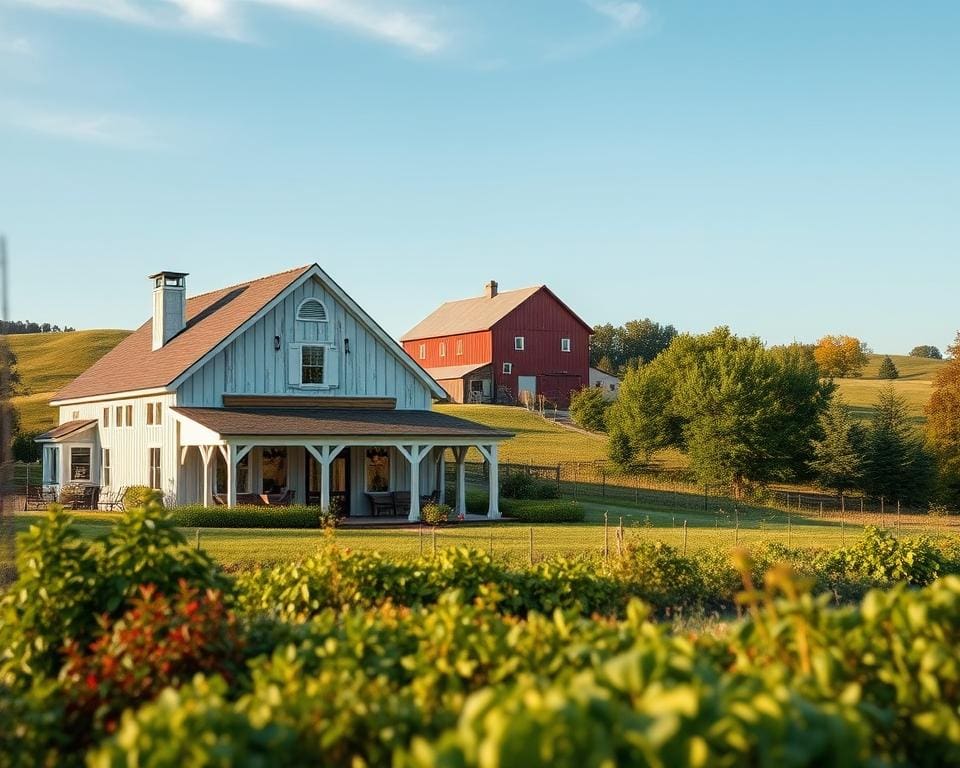
Key Characteristics of Modern Farmhouse Design
The essence of modern farmhouse design encapsulates an inviting atmosphere where rustic features meet contemporary living. A notable aspect of modern farmhouse characteristics is the emphasis on open floor plans. These layouts foster spaciousness and connectivity among different areas of the home, making them ideal for family gatherings and social interactions.
One cannot overlook the charm of large porches, which provide a welcoming transition between the indoors and outdoors. These outdoor spaces not only enhance the aesthetic appeal of the home but also offer a perfect spot for relaxation and enjoyment of nature.
Kitchens serve as the heart of modern farmhouse homes, intricately designed to fulfil both functionality and style. Featuring modern appliances set against a backdrop of vintage elements, these kitchens create a warm and inviting atmosphere. The incorporation of reclaimed materials throughout the home contributes significantly to sustainability while adding a unique character.
Interior design elements often include a blend of vintage furnishings that beautifully complement modern features. This harmony not only showcases personal style but also enriches the overall aesthetic of the home, allowing for a seamless balance between the old and the new.
Blending Tradition with Contemporary Elements
The art of blending tradition and modernity defines the current landscape of modern farmhouse design. Homeowners are increasingly drawn to transitional design, where classic architectural elements harmoniously coexist with contemporary farmhouse features. Imagine sleek, minimalist islands paired with rich, wooden cabinetry, creating a stunning visual contrast that honours the past while moving forward.
Mixing styles can transform a space. For instance, incorporating mid-century modern chairs around a rustic farmhouse table serves as an eye-catching focal point while preserving an overall sense of balance. This approach encourages creativity, allowing for the fusion of smooth surfaces like polished granite and quartz with rustic materials such as reclaimed wood, resulting in a space full of depth and character.
The intentional use of a variety of textures elevates décor, drawing attention to the intricacies of design choices. By integrating different elements, such as metal accents alongside timber framing, a cohesive aesthetic emerges that reflects both personal taste and the evolving market’s demands. Exploring inspiring decor ideas showcases how modern farmhouse interiors can achieve a stylish yet welcoming atmosphere, ensuring that they remain timeless amidst changing trends.
Why is sustainable flooring gaining popularity?
The growing trend towards sustainable flooring reflects a deepening recognition of environmental issues and a shift towards healthier living spaces. Homeowners increasingly seek options that align with their values while enhancing their interiors. Sustainable flooring options such as bamboo, cork, and reclaimed wood exemplify durability and low carbon footprints. This shift towards eco-friendly flooring contributes to the sustainable flooring popularity seen in modern design.
Understanding Sustainable Flooring Options
Sustainable flooring encompasses materials that are renewable, recyclable, or derived from responsibly managed sources. Popular choices include:
- Bamboo: Fast-growing and strong, it offers a range of styles and finishes.
- Cork: Harvested from the bark of cork oak trees, it provides natural insulation while being biodegradable.
- Reclaimed Wood: A unique choice that also tells a story, reducing waste by repurposing existing materials.
These environmentally friendly flooring options not only promote flooring sustainability but also create inviting atmospheres that resonate with the ethos of a modern farmhouse.
How Sustainable Flooring Enhances the Modern Farmhouse Aesthetic
Integrating sustainable flooring into modern farmhouse designs enriches the overall ambiance while aligning with eco-conscious ideals. The organic textures and finishes of materials like reclaimed wood complement the rustic charm and elegant simplicity synonymous with this style. Eco-friendly flooring provides a warm, inviting foundation for homes, helping to create spaces that are as comforting as they are stylish.
The Role of Eco-Friendly Materials in Home Design
Eco-friendly materials stand at the forefront of sustainable home design, playing a pivotal role in shaping modern living spaces. The integration of these materials—like recycled steel, natural stone, and organic textiles—contributes significantly to environmentally friendly construction practices. By choosing such materials, homeowners not only reduce their carbon footprint but also create a healthier environment for their families.
Embracing green design starts with a commitment to using materials that are responsibly sourced. This approach fosters a connection to the local community and enhances the resilience of local economies. Additionally, eco-friendly materials often exhibit superior durability and longevity, ensuring that the investment in sustainable home design pays off over time.
As awareness of environmental issues grows, the demand for eco-friendly options continues to rise. Homeowners are increasingly seeking out innovative solutions that marry style with sustainability, reflecting a shift towards conscientious living. Such choices enable individuals to craft beautiful spaces that embody their values while inspiring others to consider the impact of their design decisions.
Incorporating Sustainable Flooring in Your Home
Incorporating sustainable flooring into your home allows you to create a stylish and environmentally-conscious living space. With a range of flooring options for modern farmhouse aesthetics, you can select materials that complement your design vision while also being kind to the planet. Popular choices, such as reclaimed wood, linoleum, and bamboo, not only enhance the rustic charm of your interiors but also contribute positively to environmental sustainability.
It is essential to research providers of eco-friendly flooring to ensure you are making informed choices. Different materials can offer unique benefits, so understanding their characteristics is vital in the decision-making process. For instance, while bamboo provides a contemporary feel, linoleum offers versatility with vibrant patterns that can brighten up any room. Each option aligns beautifully with the modern farmhouse style, blending comfort with ecological responsibility.
Moreover, considering the installation methods for your sustainable flooring is crucial. Some options might require specialised installation procedures compared to traditional flooring materials. By opting for an eco-friendly installation, you not only protect the integrity of the materials but also uphold a design ethos that resonates with the principles of sustainability. Ultimately, incorporating sustainable flooring establishes a firm foundation for your home that is both fashionable and environmentally friendly.

